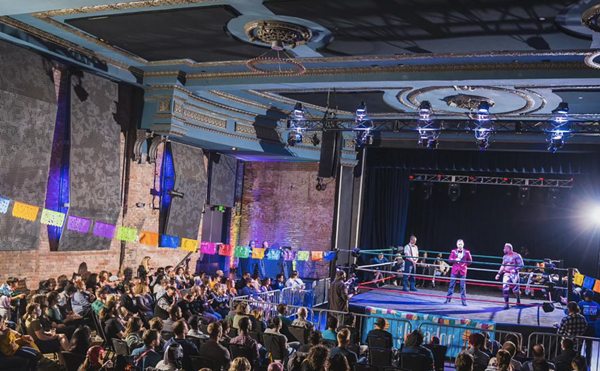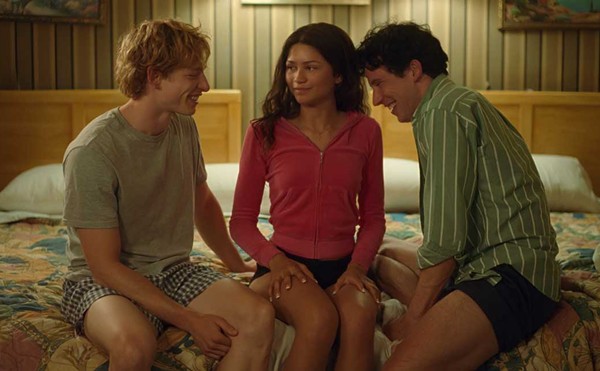One of the effects of last year's Pulitzer Prize-winning biography by Mark Stevens and Annalyn Swan of painter Willem de Kooning is the renewed interest in the 10th Street art scene of Greenwich Village in the 1950s. Milton Resnick is an artist from that period who's more than ready for re-evaluation. Fortunately for Detroiters, a choice selection of his late 1950s work is now on view at David Klein Gallery in Birmingham. It's the first show of Resnick's paintings since his 2004 suicide at the age of 87, and it captures the artist at a key moment in his development.
The earliest paintings on canvas are from 1957, a time when de Kooning was the undisputed master of the New York art world after Jackson Pollock had died the year before in a rollover car crash. Resnick had known de Kooning for nearly two decades by then — his work that year shows the influence of the more celebrated artist who was 13 years his senior. "WG," "Play Thing" and "Red Man" feature thick, agitated brushstrokes that slash across the canvas' surface, dividing the field of each painting into cubist-like facets, though Resnick's palette displays a greater intricacy of color than De Kooning used at the time. (One small black-and-white work on paper in the show from 1955 [pictured at left] closely replicates de Kooning, but it's a damn fine piece regardless.) While these paintings are de Kooningesque in terms of composition, their execution is marked by a density of pigment that's uniquely Resnick. And it's a testament to Resnick's craftsmanship that there's hardly a crack in these heavy layers of paint some 50 years after application.
In 1958, Resnick really starts to come into his own, primarily as a result of smaller brushstrokes put down closely together that atomize the space of the canvas and open the gateway to the layering of paint on top of paint. This "sedimentation" technique became Resnick's hallmark, which he explored with greater complexity in the ensuing three decades. (Some of the late paintings are so overloaded with pigment that they can weigh more than 400 pounds.) "Storage" is a tour de force in that regard. Thick globs of paint roil together like some kind of erupting primordial mud, the whole field set in motion with interlocking blocks of intense hues.
The transition is complete by 1959, with the key image being "Unicorn," a painting so thoroughly worked over that it's impossible to truly understand from any kind of reproduction. At first glance it seems almost monochromatic. But closer inspection reveals a foundation of purple wash upon which dashes of warm colors are built. Over this intermediate layer are blotches of cool tonalities, virtually obliterating what's underneath. Yet the eye still senses those warm colors pulsating under the surface, and the cool colors seem to tamp them down, creating a tension that focuses awareness on the mass of pigment as a pure physical fact. It's a Zen-like moment of aesthetic truth.
Resnick came to this way of working around the same time that pop art exploded onto the New York scene. Because of his association with the then ebbing tide of abstract expressionism (a connection he rejected), Resnick never quite got the attention he deserved in his lifetime. Here's hoping this show helps correct the historical record.
Milton Resnick: Back on 10th Street runs until Nov. 25, at David Klein Gallery, 163 Townsend St., in Birmingham. A full-color catalog featuring an essay by Geoffrey Dorfman is also available.
Vince Carducci is a Metro Times arts critic. Send comments to [email protected]




